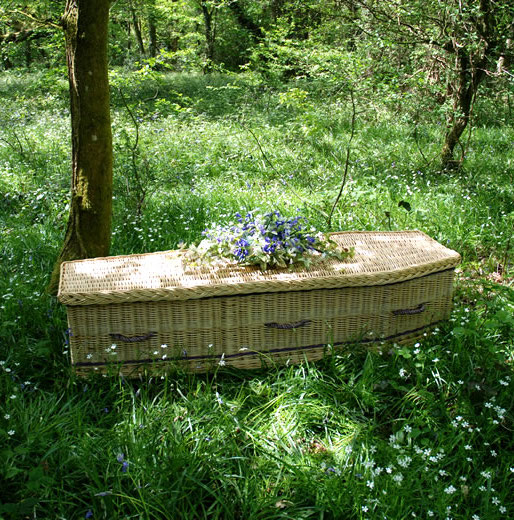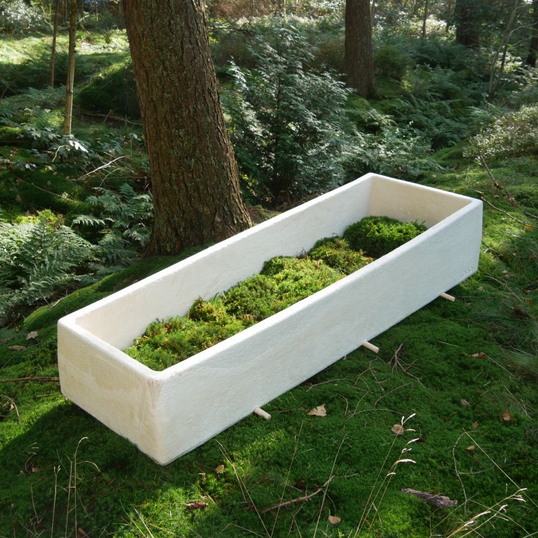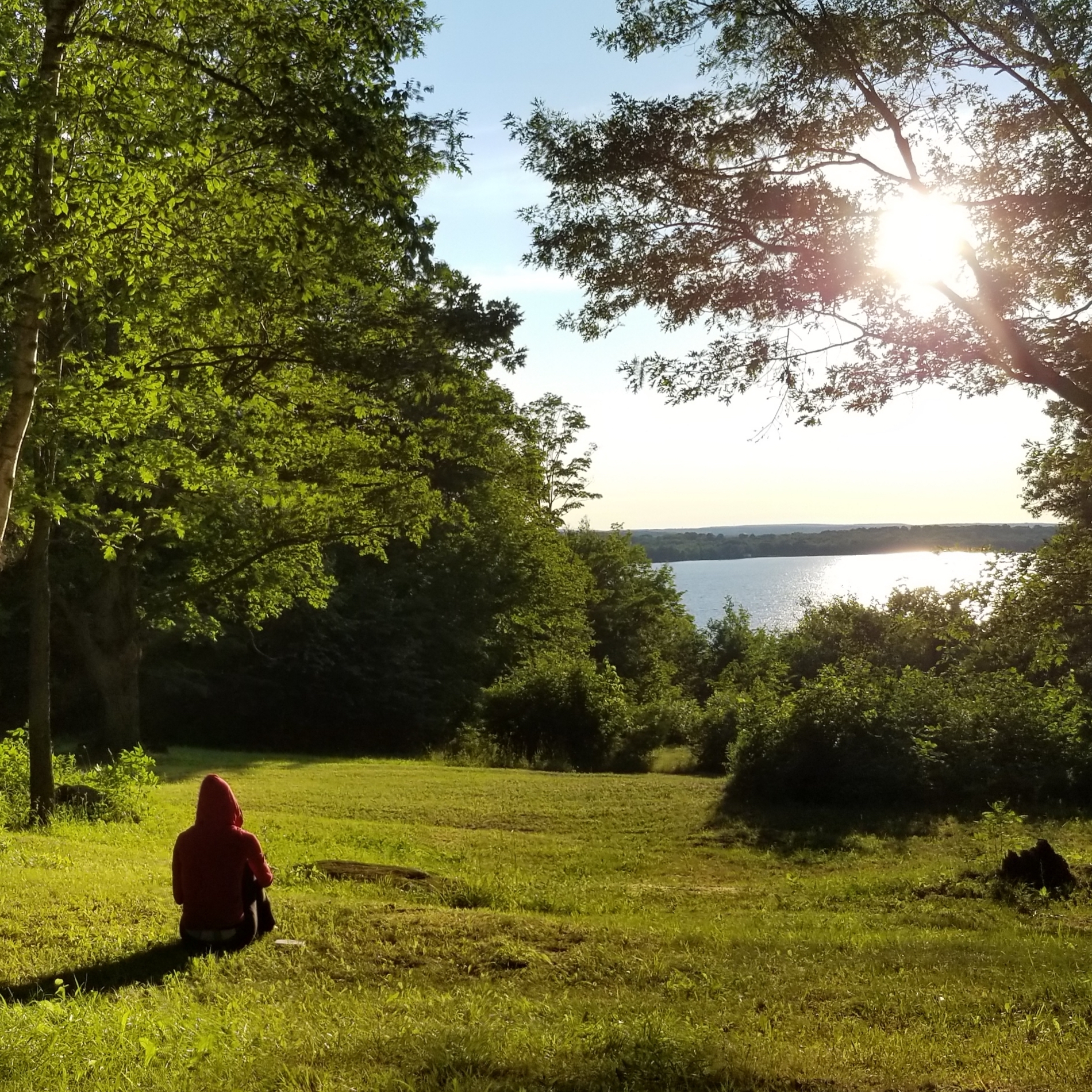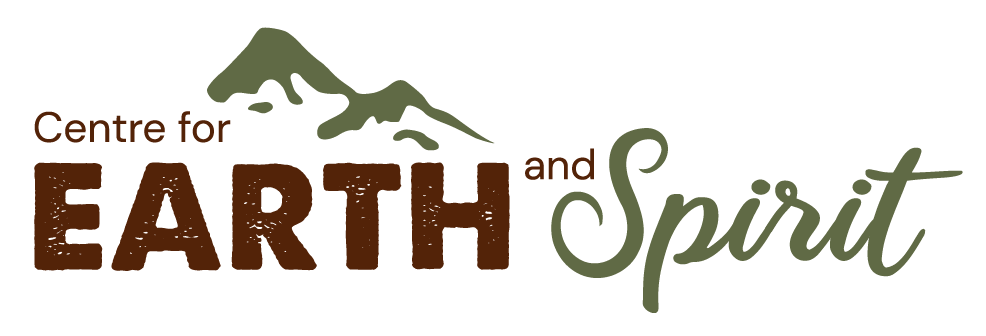Natural Burials

“Apprentice yourself to the curve of your own disappearance.”
~ David Whyte
Natural or
Conservation Burials
A Brief Introduction
Have you considered a natural burial for yourself or your loved ones?
Death is not something we want to think about most of the time. And it’s not something we talk about much either. But here’s the thing: it happens to each one of us at the end of our lives.
We can ease the path for people we leave behind by thinking and talking about our ending before it happens. And we can make a positive contribution to the environment by planning for a natural burial.
Conservation burials are gaining new popularity as we consider ways to lighten our ecological footprint. As in life, we can make choices to leave the earth in better shape than we found it. Many of us are reassessing the ecological implications of our actions as we grow increasingly aware of the cumulative effects of our lifestyle choices and collective norms. So too, practices associated with end of life “death style” choices are receiving increased attention. Conventional burials and cremation both leave a heavy footprint that until recently most Canadians didn’t think about much.
EnviroNmental Impact
A goal of maximizing positive potential
Natural burials have been gaining traction as we become aware of the environmental impacts of conventional forms of human disposition. Natural, “green” or conservation burials all have the goal of maximizing the positive potential our deceased bodies have to nourish our ecosystems with minimal carbon use. This is done by reviving practices of burial that eschew embalming, caskets made with rare or treated wood and non-biodegradable materials, and cement-lined plots. Instead, natural burials seek to inter bodies untreated with toxic chemicals in compostable caskets or shrouds, directly into the earth. Natural burial cemeteries also reflect their value as habitats for flora and fauna with minimal human interference. Further, conservation burial grounds are designed to maintain these natural spaces in perpetuity for their inherent ecological value.

“Dear Mother Earth! I think I have always specially belonged to you… When I die I should like to be in you uncoffined, unshielded, the petals of flowers against my flesh and you covering me up.”
~ Emily Carr’s tombstone
A brief history
A Return to Natural Burials and Family Directed Ritual

Introduction
Natural burial practices offer ways of caring for our deceased while minimizing negative environmental impacts. They aid in conserving natural resources, reducing carbon emissions, protecting worker health, and restore and/or preserve natural habitats.
Death rituals are collective mourning activities and ceremonies that bring people together to support those grieving their loss so that they may receive comfort at a time when they are vulnerable to isolation and despair.

Indigenous approaches
Previously, First Nations customs honoured the circle of life and death in a wide variety of nature-affirming rituals and gatherings. In traditional Indigenous funerals, families would take care of their own deceased loved one. They made all arrangements, including transporting the body. Natural burial approaches and techniques were the norm. With the introduction of western religion and colonization, many of these practices were suppressed or outright lost. Some are beginning to be re-introduced.

Preparation and disposition of bodies
In 1759 an American coffin maker opened the first funeral home on our continent. By 1800 preparation of the body had largely shifted from women in the family to funeral home businesses.
In the 1860’s, the US Civil war resulted in so many deaths that embalming was introduced to prevent body decay so that bodies could be returned to their homes, often located far from the theatre of war. By 1882 the National Funeral Directors Association was formed and the shift from family-based body care and funeral planning had moved to funeral homes and directors. Embalming became the norm.

Funerals and Rituals
Until the 1860’s most funerals for North American settlers and colonialists were hosted at home, where their loved ones died. After they were built, churches became used more frequently for funerals and memorial gatherings.
By the 1930’s the trade of undertaking had taken hold in America. It became a mainstream expectation that funeral homes would take care of the body, perform embalming, facilitate showings, provide the memorial service (or at least rent out the room in which it occurred), and coordinate the disposition, usually burial or cremation.
Regarding cremations, though evidence of cremations dates from antiquity, wasn’t until 1900 that the practice became formalized in Canada. The first crematorium opened its doors in 1901 on the grounds of Mount Royal Cemetery in Quebec. Currently, cremation is preferred over burials by about 74% (in BC between 80-82%).

Moving Forward
In the early 1990’s home funerals began to occur more frequently, giving rise to public awareness that families, legally and constitutionally, have always had the right to care for their own.
As a result of increased awareness of the environment impacts of conventional burials and cremations, concerns about exorbitant professional costs, and the use of spiritually disaffected procedures, more families are turning to natural or “green” burials and family directed rituals.
Options for disposition
Understand the Alternatives
Conventional Burial
Conventional burial practices in Canada are evolving as they reflect shifting demographics and changing priorities.
As Canadian “baby boomers” age and begin to contemplate their mortality, they are seeking more active involvement in end of life decisions. This includes where they will die (e.g. home, hospice, hospital) and how their bodies will be treated afterward. Conventional methods of disposition in North American mainstream society are cremation and burial. However there is a growing awareness of the cumulative environmental footprint caused by intensive use of fossil fuel for cremation, and the use of concrete grave liners as well as coffins made from exotic woods and metals.
Embalming became popular when bodies needed to be transported home from far-away places. Over the years people began to believe that bodies needed to be embalmed so they defaulted to it without knowing why. In fact embalming is entirely unnecessary for hygienic or legal reasons (unless a body is carried across international boundaries). As we begin to shed our assumptions about embalming, more people are choosing to forego this option.
Many funeral directors are adjusting their offerings to include a wider array of products and services that reflect the diverse needs and wishes of their customers. Each family is unique and it helps to discuss wishes and expectations in advance so that fewer decisions need to be made under pressure.
Faith traditions have an enormous impact on approaches to death and dying. Although they vary widely, the prevailing principle is to honour the memory of the deceased and to help the living find comfort and solace. Jewish tradition dictates that the deceased is buried in a simple, biodegradable casket made of wood with no nails. Cremation is forbidden and embalming is not permitted unless required by law. Conversely, Hindus cremate their loved ones as they believe it is the quickest way to release the soul for reincarnation. Muslims, on the other hand believe the body should be buried as soon as possible after death. Embalming is extremely rare and they would never cremate. Indigenous practices differ according to rites and rituals of respective communities, and usually include natural elements such as sweet grass, cedar, or tobacco, songs, drumming, and fellowship. Christians accept both cremation and burial and usually hold a funeral or memorial gathering to honour the memory of their loved one. Music, flowers, and food are often included in these rituals.
Natural or Conservation Burial
At its simplest, natural or green burial is the interment of an unembalmed body in a biodegradable container without a burial vault (a concrete receptacle that encloses the casket and keeps the ground at the cemetery level for mowing).
Green burial can occur in many places including dedicated conservation burial grounds or conventional cemeteries that don’t require a vault. Many of the practices associated with green burial are standard for Jewish and Muslim burials. Natural burials decrease carbon emissions, conserve resources and can restore habitats. Conservation burial goes further by protecting the land from development. And besides mitigating the impacts of our climate crisis, green burial can redefine our relationship with death when family and friends engage with end of life in more direct and tangible ways.
A 10-acre conventional cemetery can contain 20,000 tons of concrete from vaults and enough embalming fluid to fill a swimming pool, turning the land into a landfill underground. In comparison, a 2018 study in the journal Urban Forestry and Urban Greening found that natural burial sites can help ease a range of ecosystem issues such as flooding, loss of biodiversity and poor air quality.
Green burial isn’t only about protecting places, it’s also about connecting people to the mystery of death in a grounded way. The most intimate decision we make for the end of our lives connects to everything we want to protect for now and ever more.
Adapted from: Green burials’ can change our relationship with death and help the Earth. Washington Post, 17 Dec 2021.
Cremation
Cremation is currently the most popular approach (in BC between 80-82%) to handling the bodies of our deceased loved ones. This is primarily because it is less expensive than conventional burial, and ashes may be spread legally on private lands and in public spaces such as wilderness, ocean, or parks. In some faiths it is the only manner acceptable, and it also allows for transportation of cremains to any destination.
However, the average cremation uses 106 litres or 28 gallons of gas fuel to burn a single body, which emits about 540 pounds of carbon dioxide into the atmosphere. (from Changing Landscapes: Exploring the growth of ethical, compassionate, and environmentally sustainable green funeral service; Lee Webster (editor) published 2017)
Aquamation
There is a movement for a disposition process called Alkaline Hydrolysis being advanced here in BC. It has already been approved in Quebec, Ontario, and Saskatchewan and by twenty states in the USA. This option is not available in BC yet, but we hope and expect it will be soon because it uses 95% less energy than flame-based cremation. Please visit https://www.aquamationbc.ca.
Composting
Body composting is a living function performed by living organisms. There are billions of microbial, living things in our digestive tracts and contained in our body. When our singular life ceases, the lives of those microbes continue and will break down our body into organic components mixed with small amounts of woodchips and straw. This process is slowly gaining popularity in the USA (currently legal in 3 states) but is not legal anywhere in Canada yet. A funeral director in Victoria BC now offers transportation of bodies to Washington state for Canadians who wish to exercise this option. Contact https://www.earthsoption.com.
Greenish burials
Making a Difference
Not everyone can, or wants to, have a full “green burial” but there are steps we can take to mitigate detrimental environmental effects of disposition, and also save money. Here are some examples:
Refuse cement lining for casket
Use biodegradable casket or simple shroud
Refuse embalming
Bury in a hybrid cemetery
If Green Burial is not possible but you are interested in reducing your environmental impact, here are 10 simple things you can do to make a difference. (taken from https://www.korucremation.com)
